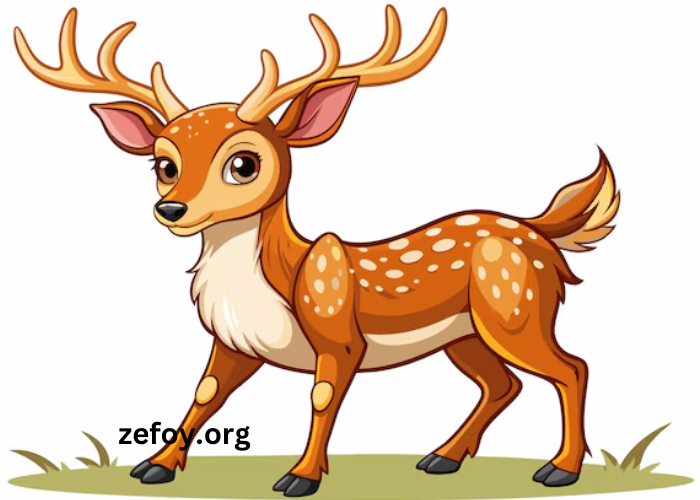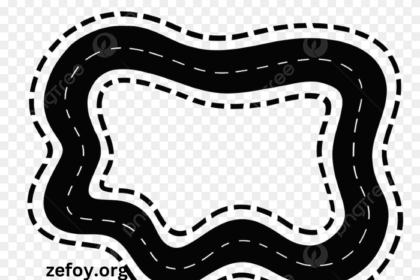Deer are among the most graceful and captivating animals in the natural world, admired for their elegance and agility. Found in various habitats across the globe, these creatures embody the essence of wilderness and are deeply intertwined with human culture and mythology. The beauty of Deer has inspired countless artists, writers, and nature enthusiasts, leading to their prominent representation in art, folklore, and even spirituality.
In this exploration, we will delve into the life of Deer, their ecological importance, cultural significance, and the various ways they have been represented in art, including Clipart:-Ir2hljwcmm= Deer. We will also discuss their conservation status and the challenges they face in a rapidly changing world. Through this comprehensive look, we aim to highlight the beauty and importance of these remarkable creatures.
What Are the Different Species of Deer?
There are over 90 species of Deer, each adapted to their specific environments and exhibiting unique characteristics. The most well-known species include the white-tailed deer, mule deer, red deer, and elk. Each of these species has distinct physical features, behaviors, and habitats that make them unique.
For example, the white-tailed deer is prevalent in North America and is easily recognized by its white underside to its tail, which it raises when alarmed. This behavior is not just a signal to other deer but also serves to warn potential predators. In contrast, the red deer, native to Europe and parts of Asia, is known for its impressive antlers, which can grow up to four feet in length.
Understanding the diversity of Deer species is crucial for appreciating their role in ecosystems and their interactions with humans. Each species contributes to the ecological balance in its habitat, from controlling vegetation growth to serving as prey for larger predators.
What Is the Habitat of Deer?
Deer are incredibly adaptable creatures, inhabiting a wide range of environments from dense forests to open grasslands and even mountainous regions. Their habitat preferences often depend on the species, as well as seasonal changes.
For instance, white-tailed deer thrive in a variety of habitats, including forests, wetlands, and suburban areas. Their ability to adapt to human-altered landscapes has allowed their populations to flourish. Conversely, species like the mule deer are more selective, preferring rugged terrains with plenty of cover.
In addition to their physical habitats, Deer rely on specific environmental conditions to meet their needs for food, water, and shelter. Understanding these habitats is vital for conservation efforts and wildlife management, ensuring that these beautiful creatures continue to thrive in their natural environments.
How Do Deer Contribute to Ecosystems?
The role of Deer in ecosystems is both vital and complex. As herbivores, they play a significant role in shaping plant communities. By grazing on various vegetation, Deer help to control plant growth and promote biodiversity. This grazing activity can create open areas that allow sunlight to reach the forest floor, encouraging the growth of new plants and flowers.
Furthermore, Deer serve as prey for many predators, including wolves, mountain lions, and bears. Their presence in the food chain is essential for maintaining the balance of wildlife populations. When Deer populations are healthy, they contribute to a thriving ecosystem; however, overpopulation can lead to habitat degradation and increased human-wildlife conflicts.
Moreover, Deer are also important in nutrient cycling. Their waste products enrich the soil, promoting plant growth and benefiting other species in the ecosystem. This intricate web of interactions highlights the importance of protecting Deer and their habitats for the health of our natural environments.
What Cultural Significance Do Deer Hold?
Throughout history, Deer have held a special place in human culture, symbolizing various qualities such as grace, intuition, and gentleness. Many indigenous cultures revere Deer as sacred beings, often viewing them as messengers between the physical and spiritual worlds. In Native American traditions, for example, Deer are associated with love, kindness, and compassion, embodying the spirit of gentleness.
In art and literature, Deer have been depicted in various forms, symbolizing beauty and the harmony of nature. They appear in countless stories, myths, and fables, often representing the ideal of living in harmony with the earth. The representation of Deer in Clipart:-Ir2hljwcmm= Deer serves as a testament to their lasting influence in artistic expression, providing inspiration for both professional and amateur artists.
Moreover, Deer are commonly featured in holiday celebrations and seasonal decorations. Their images evoke feelings of warmth and nostalgia, often associated with family gatherings and the beauty of nature. This cultural significance underscores the deep connection between humans and these magnificent animals.
How Are Deer Represented in Art and Clipart?
The representation of Deer in art has evolved over centuries, reflecting changing attitudes toward nature and wildlife. From ancient cave paintings to modern Clipart:-Ir2hljwcmm= Deer, artists have sought to capture the beauty and grace of these creatures.
In traditional art, Deer have often been depicted in natural settings, showcasing their elegance and interaction with the environment. In contrast, contemporary Clipart has embraced a more stylized approach, utilizing bold colors and simplified forms to create visually striking representations of Deer.
The use of Deer in Clipart serves various purposes, from educational materials to decorative designs. They are often used in greeting cards, nature-themed projects, and seasonal decorations, allowing individuals to express their appreciation for wildlife in a creative way. This versatility demonstrates the ongoing appeal of Deer as a subject in art.
What Are the Threats to Deer Populations?
Despite their resilience, Deer populations face numerous threats that can impact their survival. Habitat loss due to urban development, agriculture, and logging poses a significant risk to their natural environments. As human populations expand, Deer often find themselves squeezed into smaller and less suitable habitats, leading to increased competition for food and shelter.
Additionally, climate change is altering the landscapes that Deer depend on. Shifting weather patterns can affect food availability and migration patterns, impacting their populations. As their habitats change, Deer may struggle to adapt, leading to declines in certain areas.
Another significant threat comes from hunting and poaching. While regulated hunting can be a management tool to maintain healthy populations, illegal hunting can severely impact local Deer numbers. Striking a balance between conservation efforts and sustainable hunting practices is crucial for the future of Deer populations.
How Can We Contribute to the Conservation of Deer?
Conserving Deer populations requires a multifaceted approach that involves habitat protection, sustainable practices, and community involvement. One effective strategy is the establishment of protected areas and wildlife corridors that allow Deer to thrive without the pressures of urban development.
Community education is also essential. By raising awareness about the importance of Deer in ecosystems and their cultural significance, individuals can foster a sense of stewardship and responsibility towards wildlife. Programs that promote sustainable hunting practices and habitat restoration can empower communities to contribute positively to conservation efforts.
Additionally, supporting local wildlife organizations and participating in conservation initiatives can make a difference. Whether through volunteering, donations, or advocacy, individuals can play an active role in ensuring that future generations experience the beauty and grace of Deer in their natural habitats.
Conclusion
Deer are more than just beautiful animals; they are integral to our ecosystems and cultural heritage. Through their grace and adaptability, they have captivated our imaginations and inspired countless works of art, including Clipart:-Ir2hljwcmm= Deer. As we continue to learn about these remarkable creatures, it is crucial to recognize the threats they face and take action to protect their habitats.
By fostering a deeper appreciation for Deer and their role in nature, we can ensure that these magnificent animals continue to thrive. The journey of understanding and conserving Deer is not just about protecting a species; it is about preserving the delicate balance of our ecosystems and nurturing the connection between humans and the natural world. Let us work together to celebrate and safeguard the enchanting beauty of Deer for generations to come.




